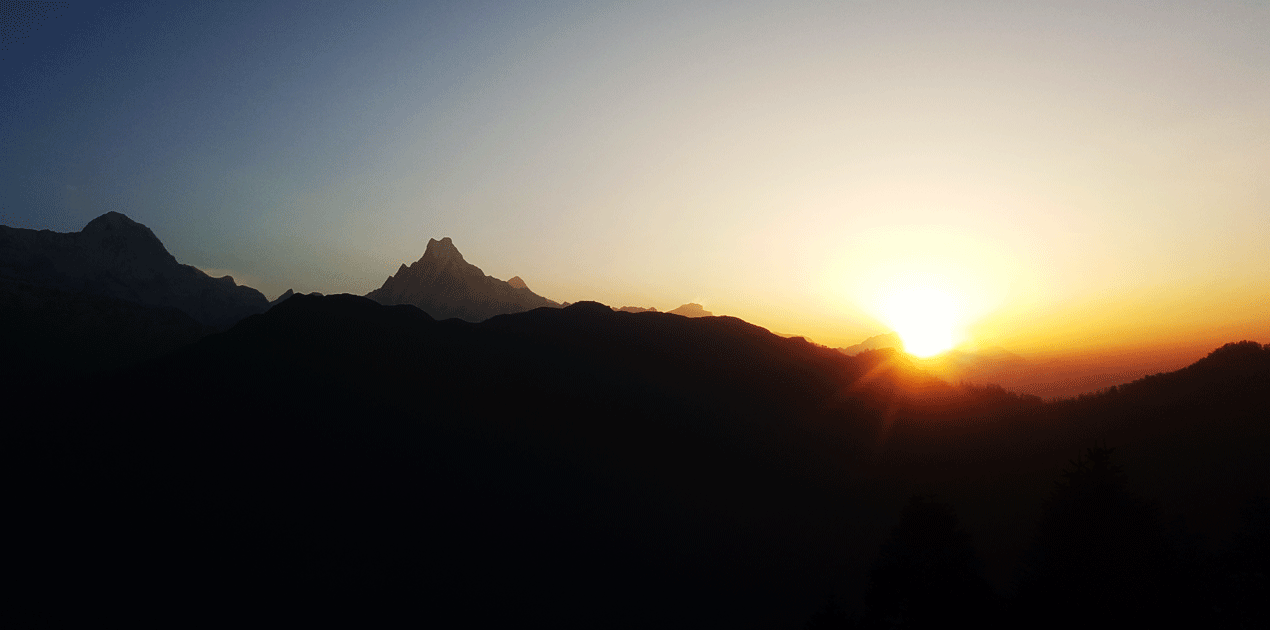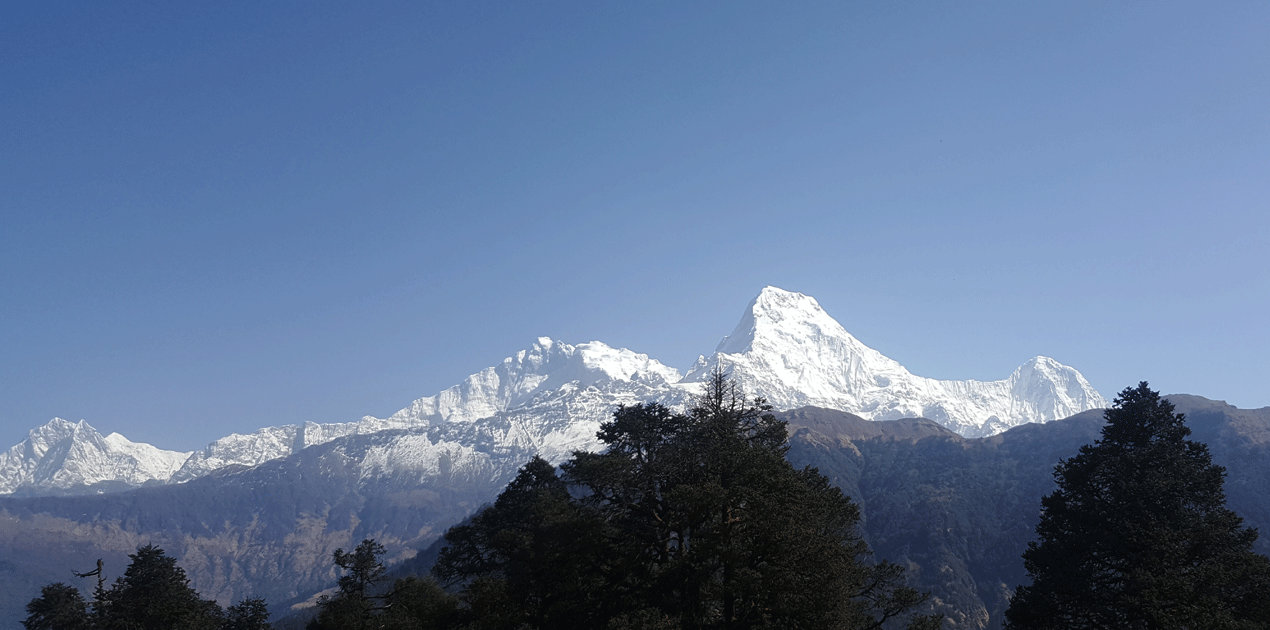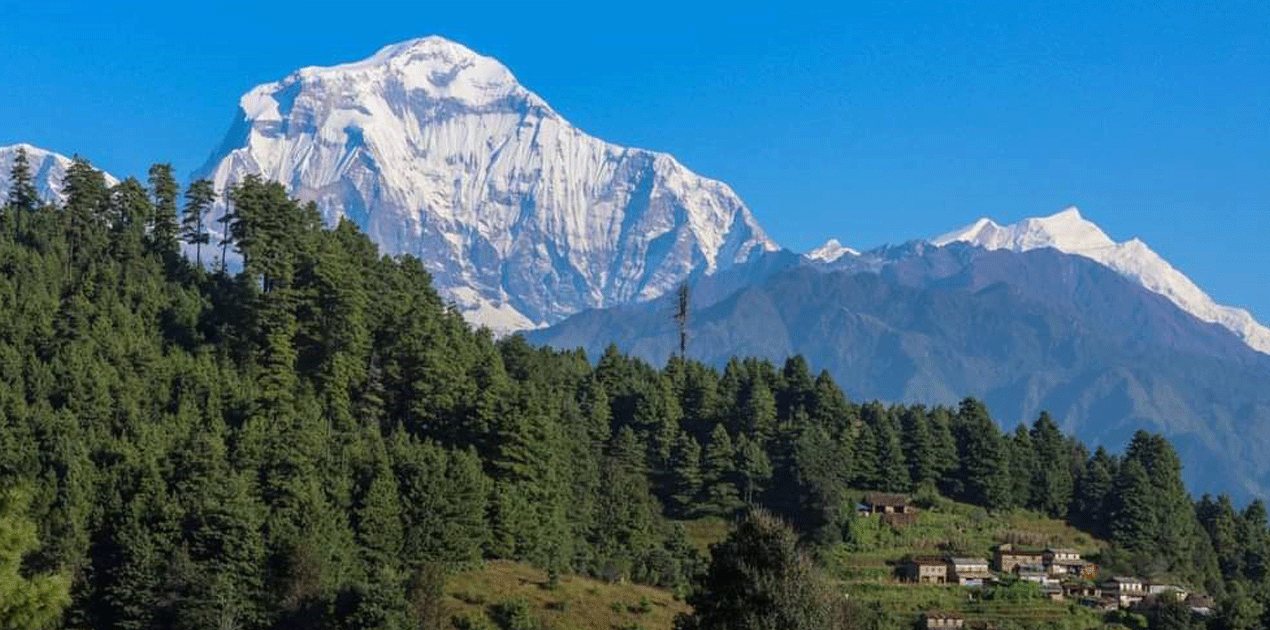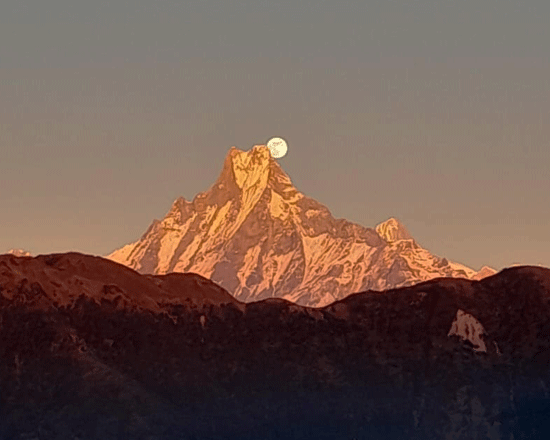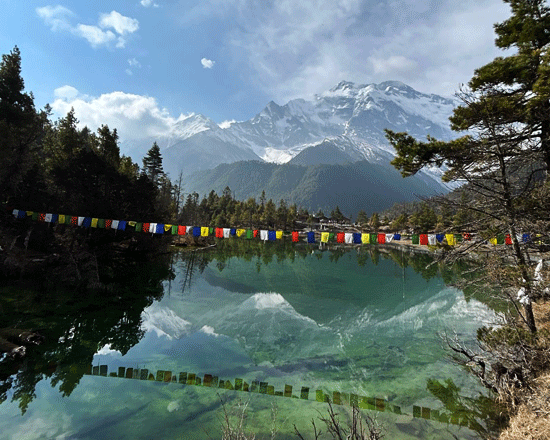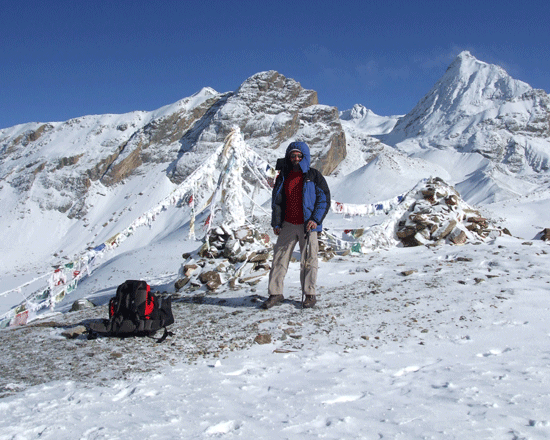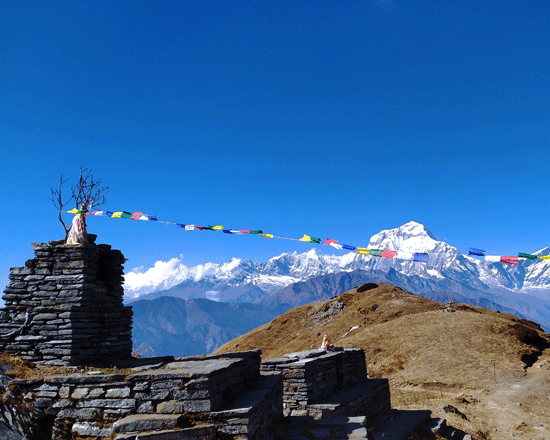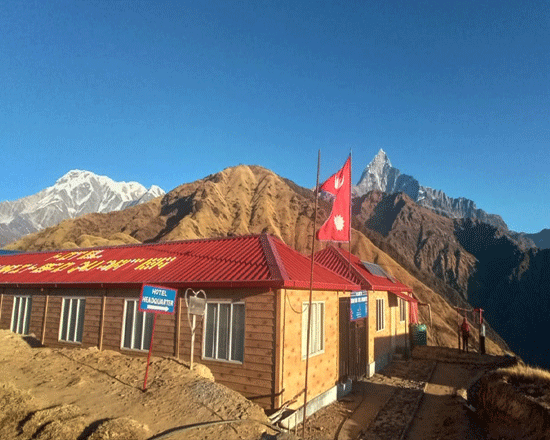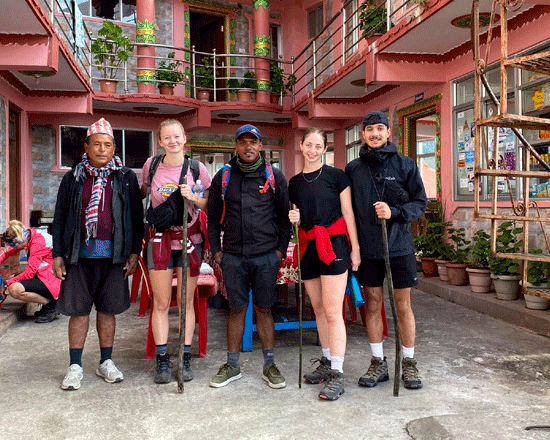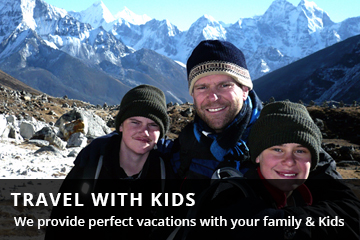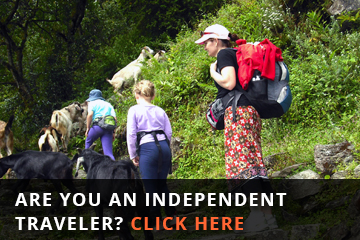Kokhe Danda Trek
Kokhe Danda Trek
Annapurna RegionTrip Facts
Since the terrain can be hard and the days long, hikers on these treks should be in good physical condition and have some previous mountain walking experience. Steep climbing may be involved, although it is never necessary to use ropes. Treks at this level can he arranged for periods of 16 to 21 days. Typically, a gradual ascent through a green river valley will lead you up to a number of high passes, where you will reach the altitude of 5416m. Often times, you will get a close insight into the Tibetan culture. Participants should expect to trek above 5416m/17872ft.
100%
Overview
Kokhe Danda Trek – A New Alternative to Poon Hill
If you’re looking for a peaceful and culturally rich trekking experience near Pokhara that hasn’t yet made it onto the mainstream tourist map, the Kokhe Danda Trek is a perfect choice. This newly introduced trail offers all the natural charm and panoramic Himalayan views of more popular treks, such as Poon Hill, but with a quiet, off-the-beaten-path atmosphere.
Set in the serene hills of Parbat District, Kokhe Danda trek rises to around 2,500 meters and treats trekkers to breathtaking sunrise and sunset vistas over the Annapurna and Dhaulagiri ranges. It’s a wonderful trek for those with limited time, and who still seek authentic encounters with local culture and nature.
A Quieter Version of the Poon Hill Trek
Much like the famed Poon Hill, Kokhe Danda trek is ideal for stunning mountain views without requiring high altitude acclimatization. Unlike the Poon Hill, this trail offers a quieter, more intimate trekking experience, perfect for travelers who want to avoid the crowds and connect with local life.
Kokhe Danda trek is also part of a growing family of scenic community treks in the Annapurna region. It shares similarities with:
- Mohare Danda Trek – The first eco-community lodge trek in Nepal
- Karbakeli Eco Trek – A culturally significant trail with spiritual and panoramic appeal
Together, these trails present meaningful alternatives to commercialized trekking routes, offering natural beauty, community involvement, and peaceful paths.
Culture and Community Experience
The region is home to Magar and Gurung ethnic communities, known for their rich traditions and legendary hospitality. As you head through quaint villages like Banskharka, Salija, and Durlung, you’ll be immersed in a living heritage of local music, traditional homes, and agricultural lifestyles.
Many locals still produce their food and beverages, such as millet raksi (homemade liquor), and are eager to share their stories and culture. These communities, some with links to former Gurkha soldiers, offer a warm, grounded, and authentic trekking experience.
Agricultural Lifestyle of Kokhe Danda Trek
Agriculture plays a central role in the livelihoods of Kokhe Danda’s inhabitants. Terraced fields of rice, millet, and maize are common sights along the trekking routes. Engaging with locals during planting or harvest seasons can provide a hands-on understanding of their sustainable farming practices.
Harmony with Nature
The communities here live in close harmony with their natural surroundings. Traditional knowledge of local flora and fauna is passed down through generations, and many villagers are knowledgeable about medicinal plants and ecological conservation.
The Kokhe Danda trek offers more than just scenic beauty; it provides an enriching cultural experience. By engaging with the local Gurung and Magar communities, trekkers gain a deeper appreciation for Nepal’s diverse cultural tapestry.
Natural Beauty and Biodiversity
Nature lovers will find the Kokhe Danda trek rewarding. The path leads through rhododendron forests, oak, pine, and bamboo groves, which bloom in vibrant color during springtime. The area is also home to a variety of birdlife and occasional sightings of Himalayan langurs, deer, and wild goats.
This peaceful environment is ideal for photography, birdwatching, and simply soaking in the tranquility of Nepal’s mid-hills.
Who can beat the Kokhe Danda Trek?
-
Beginner Trekkers
-
People who are new to trekking but have good general health and can walk for 4–6 hours a day.
-
No previous high-altitude trekking experience required.
-
-
Active Individuals
-
Those who regularly engage in walking, hiking, jogging, or other physical activities.
-
Age is not a barrier; trekkers with their kids from teens to the 70s have completed this trek.
-
-
Families and Seniors
-
Ideal for families with kids (above 10 years) and seniors in good health.
-
The route has gentle ascents and descents, with options to adjust pace.
-
-
Nature & Culture Enthusiasts
-
Travelers interested in local culture, forested trails, and quiet landscapes, rather than high-altitude adventure.
-
Fitness Recommendation
-
Ability to walk 5–6 hours daily on hilly terrain.
-
Light training (walking, short hikes, or cardio) 2–3 weeks before the trek is recommended.
Easy accessibility from Pokhara
Kokhe Danda trek is relatively easy and adds to its appeal for short treks. A scenic drive of around 2.5 to 3 hours from Pokhara takes you to villages such as Salija or Banskharka, from where the walking trail begins. This accessibility makes it an excellent option for travelers who want a quick getaway into the hills without needing extensive travel or high-altitude trekking.
Homestay Hospitality
There are no large hotels along the Kokhe Danda trek, but that’s part of its charm. Trekkers often stay in cozy homestays within villages like Haljure and Lespar, where families welcome guests into their homes. These accommodations provide not only a place to rest but also a chance to experience daily life firsthand. Guests can participate in cooking traditional meals, learn about local customs, and engage in meaningful conversations with their hosts. Accommodation is simple yet clean, and home-cooked meals provide a genuine taste of village life.
These accommodations allow visitors to contribute directly to local livelihoods while enjoying warm hospitality and meals prepared with fresh, organic ingredients sourced from the village.
Cultural Traditions and Festivals
The Gurung and Magar communities celebrate various festivals throughout the year, featuring traditional music, dances, and rituals. Welcoming their relatives and gathering with the neighbour, sharing their feeling of togetherness. Trekkers visiting during festival times may witness or even partake in these vibrant cultural events, offering deeper insight into the region’s heritage.
Trek Price and Package
The Kokhe Danda trek cost depends on the group size, duration, and level of service. At Nepal Wilderness Trekking, we offer fair and transparent pricing that includes transportation, accommodation, meals and professional guide services. We believe in supporting local communities while delivering exceptional value and comfort to our clients.
Why Choose Nepal Wilderness Trekking?
Led by Himal Ghale, a government-licensed guide with decades of experience, Nepal Wilderness Trekking stands for authentic Himalayan adventures that respect culture and environment.
- Skilled Local Guides – Friendly, multilingual guides who know the terrain and culture intimately
- Custom Experiences – Personalized service for solo travelers, couples, families, or groups
- Cultural Immersion – Opportunities to engage with locals, join village activities, and support local schools
- Sustainable Tourism – Focused on offbeat trails that reduce crowding and support village economies
Trail Conditions on the Kokhe Trek
-
Natural and Off the Beaten Path
-
The trail passes through lush forests, open ridges, and remote villages.
-
It is not heavily developed like the Annapurna or Everest regions, making it feel raw and untouched.
-
-
Forest Trails
-
Walk through rhododendron, pine, and oak forests, especially colorful during spring.
-
Forest sections are cool, shaded, and rich in birdlife.
-
-
Village Paths
-
The trek connects charming Magar, Gurung, and Tamang settlements.
-
Trails are often stone-paved or packed earth, winding through terraced fields and homesteads.
-
-
Ridge Walk to Kokhe Danda
-
The final stretch to Kokhe Danda ridge offers a wide, grassy trail with stunning views.
-
Some short, steep sections, but manageable for anyone with moderate fitness.
-
-
Trail Maintenance
-
The trail is well-marked but not commercialized, so a local guide is recommended for better navigation and cultural insight.
-
Trail Difficulty
-
Moderate: Daily walking hours range from 4 to 6 hours, with gentle ascents.
-
No technical climbing; just gradual uphill and downhill walking on natural terrain.
Best Time to Visit
The best seasons to trek to Kokhe Danda are:
- Spring (March to May): Clear views and blooming rhododendrons
- Autumn (September to November): Cool weather, festivals, and stunning visibility
- Winter (December to February): Quiet trails and occasional snow on the ridge
A Trek to Remember
For those seeking a beautiful, short, and culturally meaningful trek near Pokhara, the Kokhe Danda Trek is an exceptional hidden gem. It captures the spirit of the Himalayas majestic peaks such as Dhaulagiri (8,167m), Annapurna, Machhapuchhre (Fishtail), Langtang, and Manaslu ranges, kind-hearted people, and a life lived in harmony with nature. Sunrise and sunset from Kokhe Danda are particularly breathtaking.
The similar other trek with stunning panoramic Mountains view are Mohare Danda trek, Mardi Himal Trek, Pikey Peak trek, and Sailung trek.
About the company
With Nepal Wilderness Trekking, you’re not just walking through scenic landscapes; you’re walking into the heart of Nepal’s rural beauty, culture, and hospitality.
Detail Itinerary
- Day 01: Pokhara (827 m) – Drive to Kusma (1,190 m) – Banau (2,000 m) – Trek to Haljure (2,270 m)
Enjoy a scenic 2.5-hour drive from Pokhara to Banau via Kusma, passing through beautiful countryside and terraced hills. From Banau, begin a short uphill trek to Haljure village (approx. 3 km / 2 hours). Overnight homestay in Haljure with views of the surrounding mid-hill landscapes. - Day 02: Haljure (2,270 m) – Trek via Sarga Camp (2,930 m) and Mohare Hill (3,300 m) – Arrive at Kokhe Danda (2,950 m)
Begin a full-day trek through lush rhododendron forests and along scenic ridges. The trail offers stunning Himalayan views including Dhaulagiri and Annapurna ranges. Trek distance approx. 13 km / 6–7 hours. Overnight at a lodge or homestay in Kokhe Danda. - Day 03: Kokhe Danda (2,950 m) – Trek to Hile (1,430 m) – Drive back to Pokhara (827 m)
Start the day with a beautiful sunrise over the Himalayas from Kokhe Danda. Then descend through forests and villages to Hile (approx. 10 km / 4 hours). After lunch in Hile, drive back to Pokhara (approx. 3 hours by private vehicle). Trip ends.
Cost Included
- Pokhara to Banau by local bus and returning from Hille to Pokhara by shared jeep
- Italian, Chinese, Nepali, Indian, and many other European Delicious Meals three times a day(Breakfast, lunch, and dinner chosen from the Menu).
- Clean and excellent lodge bathroom accommodations are on the way.
- Micro spikes for Dec to Feb.
- Experienced English-speaking trekking guide licensed by the government, familiar with the area.
- One porter for every two to three participants. (Note: An additional cost applies for solo clients requiring a porter.)
- (ACAP) Annapurna Conservation Area project Permits and (TIMS) Trekking Information, management, and system card.
- Guides/Porters: food, lodge, bus transportation, salary, insurance, equipment, etc.
- A kitbag for carrying your belongings for a porter.
- A nice and clean blanket is provided.
- Necessary paperwork, all government, and local taxes.
- A certificate of appreciation from Nepal Wilderness Trekking after a successful trek
Cost Excluded
- International airfare
- Nepal visa on arrival (e.g., 15 days: $25–30, 30 days: $40)
- Hotels and meals in Kathmandu and Pokhara (before/after trek)
- Personal gear for cold weather
- Emergency rescue (covered by your travel insurance)
- All drinks (soft, alcoholic, coffee, etc.)
- Bottled water, desserts, laundry
- Tips for the guide and the porter
- Anything not listed under "Cost Includes"
- Extra costs due to events beyond our control (weather, strikes, illness, itinerary changes, etc.)

